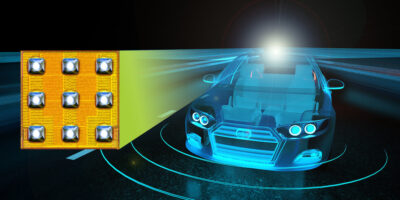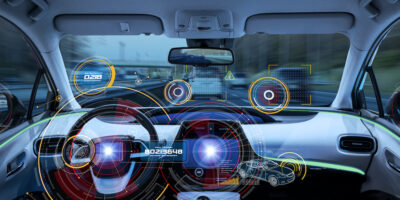The latest addition to Efficient Power Conversion (EPC)’s family of automotive qualified transistors and ICs is small enough for time-of-flight (ToF) lidar applications including robotics, drones, 3D sensing and autonomous cars.
The EPC2221 is a common source dual GaN FET rated at 100V, 58 mOhm and 20A pulsed current. The FET can be also be used in surveillance systems and vacuum cleaners.
The low inductance and capacitance of the EPC2221 allows fast switching (100MHz) and narrow pulse widths (two nanoseconds) for high resolution and high efficiency. Additionally, the small size (1.35 x 1.35mm) reduces PCB cost and total solution size, says EPC.
This latest member of EPC’s family of GaN transistors and ICs designed to meet the performance and reliability standards of demanding automotive applications has completed AEC Q101 qualification testing including humidity testing with bias (H3TRB), high temperature reverse bias (HTRB), high temperature gate bias (HTGB), and temperature cycling (TC).
In addition to lidar in automotive applications, the EPC2221 is suited to high-frequency DC/DC conversion, wireless power applications and synchronous rectification.
Alex Lidow, CEO and co-founder of EPC, believes this IC “improves the performance while reducing size and cost for time-of-flight lidar systems.”
The EPC2221 is available for immediate delivery from Digi-Key Electronics.
Designers interested in replacing silicon MOSFETs with a GaN device can use the EPC GaN Power Bench’s cross reference tool to find a suggested replacement based on operating conditions.
EPC specialises in enhancement mode GaN-based power management. The company says eGaN FETs and ICs provide performance many times greater than the best silicon power MOSFETs in applications such as DC/DC converters, remote sensing technology (lidar), motor drives for eMobility, robotics, and drones and low-cost satellites
EPC will be at PCIM Europe (10–12 May 2022) Hall 9 – Stand 113







